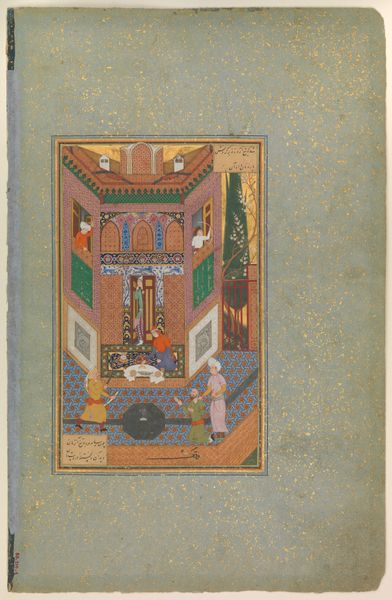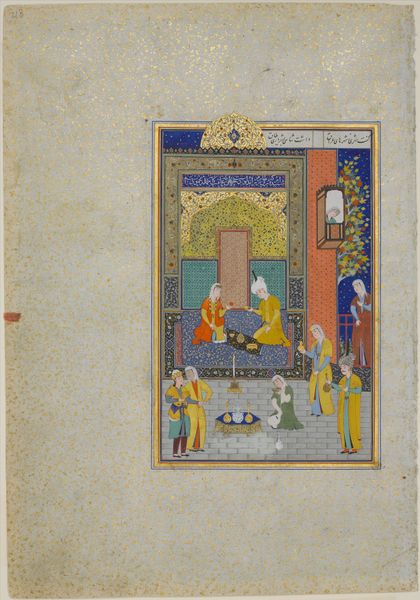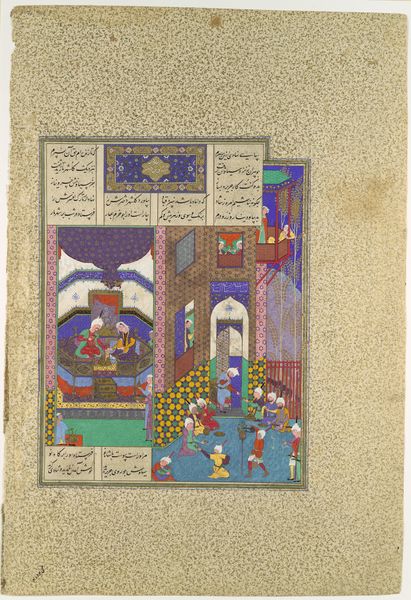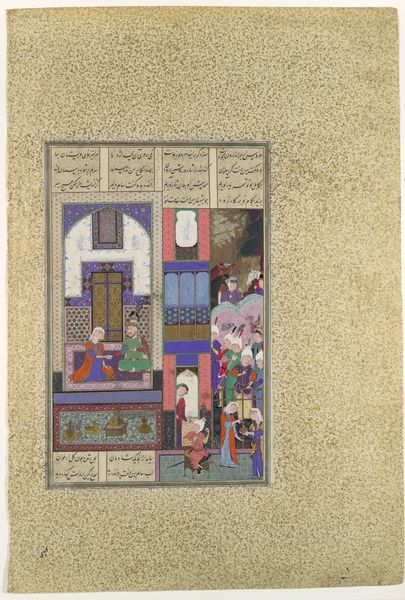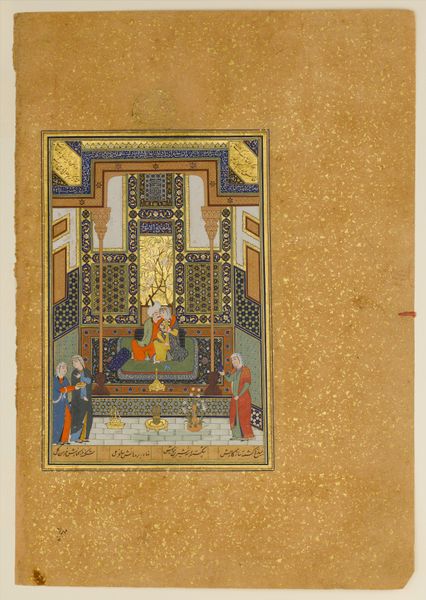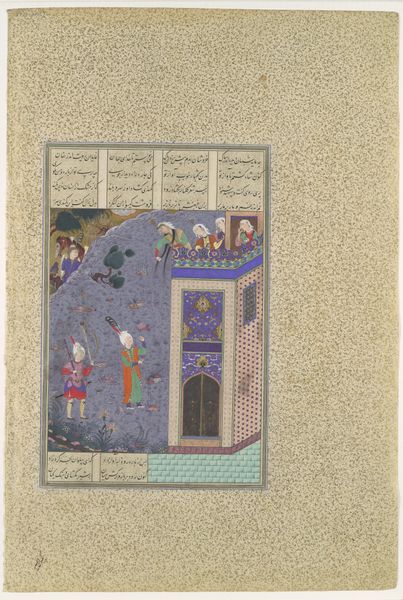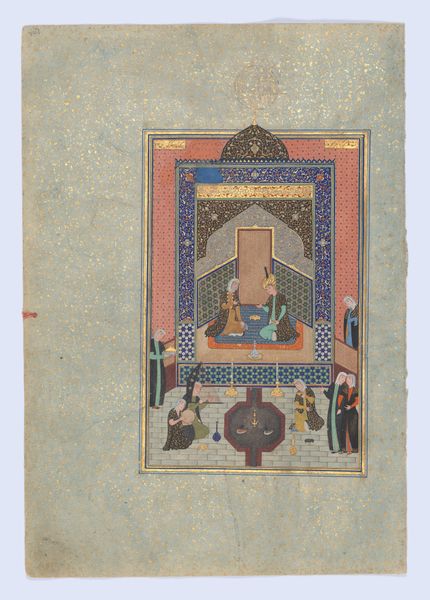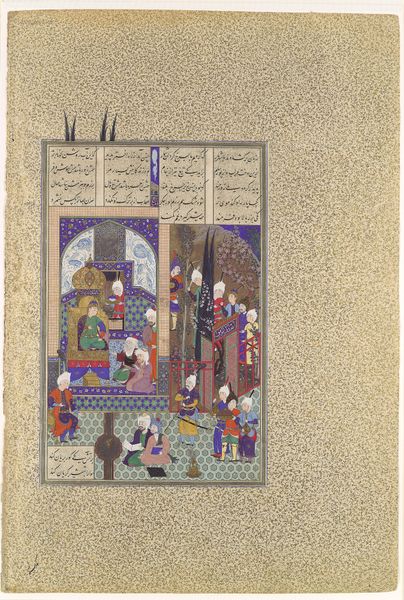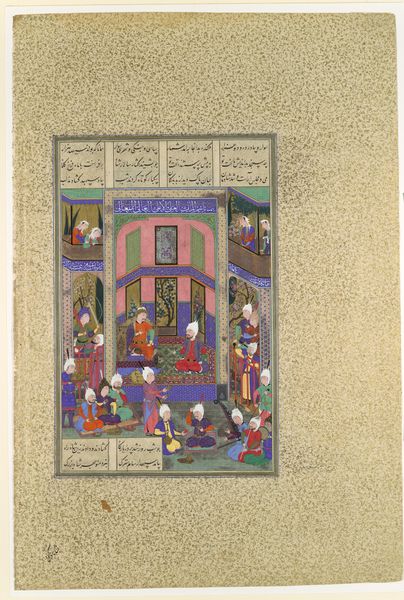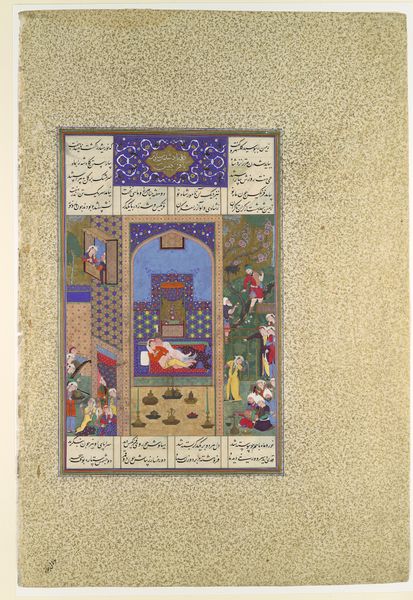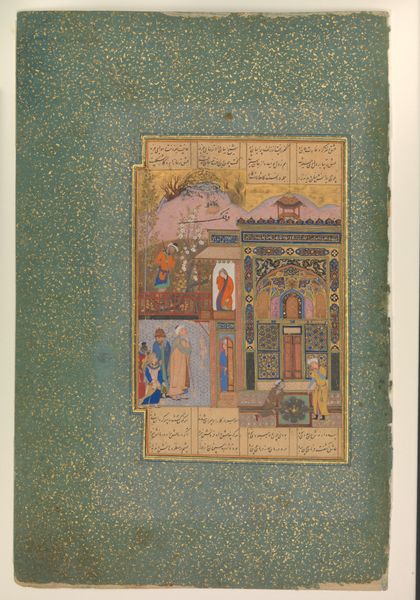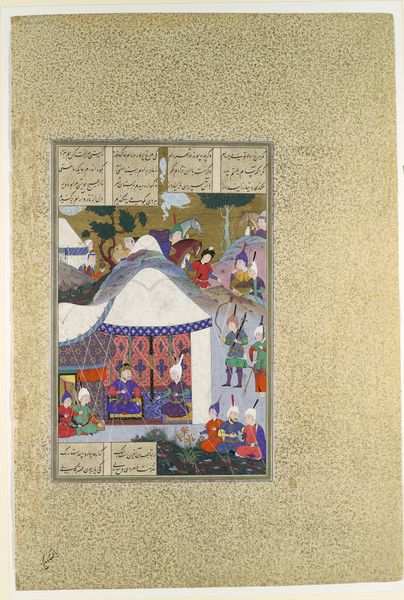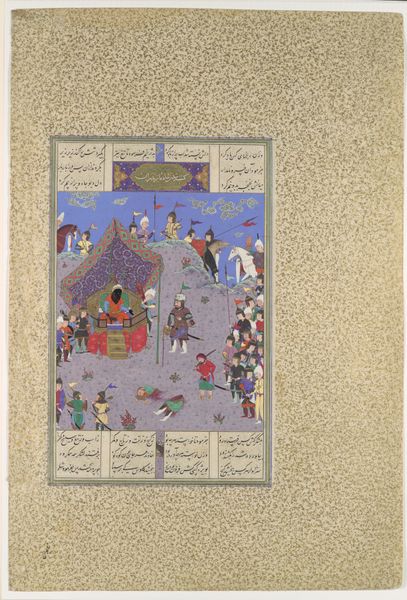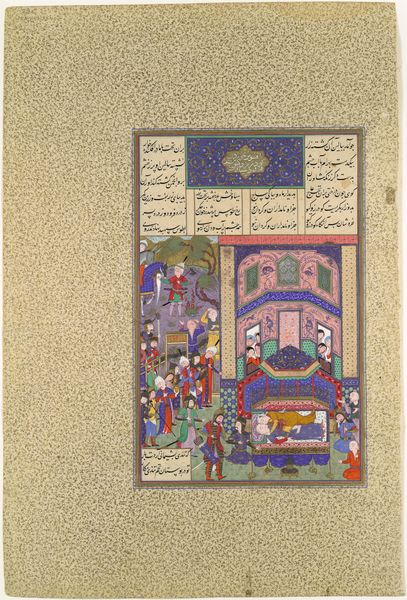
"Bahram Gur in the Turquoise Palace on Wednesday", Folio 216 from a Khamsa (Quintet) of Nizami of Ganja 1500 - 1550
0:00
0:00
painting, watercolor
#
narrative-art
#
painting
#
landscape
#
watercolor
#
coloured pencil
#
islamic-art
#
musical-instrument
#
miniature
#
watercolor
Dimensions: Painting: H. 7 7/8 in. (20 cm) W.4 7/8 in. (12.4 cm) Page: H. 12 11/16 in. (32.2 cm) W. 8 3/4 in. (22.2 cm) Mat: H. 19 1/4 in. (48.9 cm) W. 14 1/4 in. (36.2 cm)
Copyright: Public Domain
This painting, "Bahram Gur in the Turquoise Palace on Wednesday," comes from a manuscript of the Khamsa, or Quintet, of Nizami of Ganja. Likely created in the 15th century, the image gives visual form to the writings of the 12th-century Persian poet Nizami. The painting illustrates a scene of courtly life, complete with musicians and attendants. The opulent setting reflects the values of the royal or aristocratic patron who commissioned the manuscript. The image evokes a sense of idealized beauty and harmony. The painting speaks to the cultural and intellectual life of its time, reflecting the importance of literature, poetry, and the visual arts. To understand this work more fully, scholars consult historical texts, architectural drawings, and patterns, along with related examples of Islamic painting and decorative art. These resources help us to understand the social context that shaped its production and meaning.
Comments
No comments
Be the first to comment and join the conversation on the ultimate creative platform.
